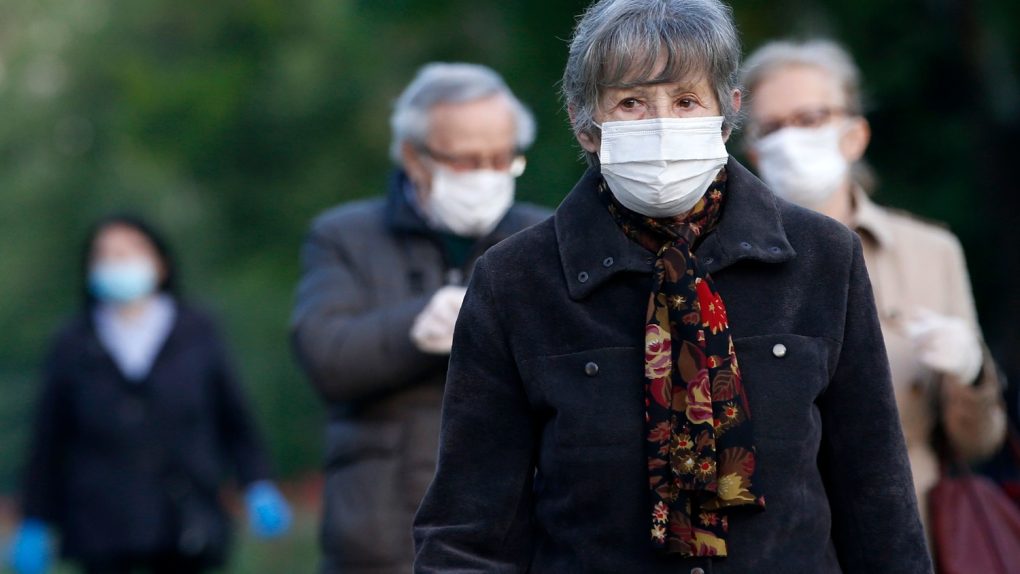- The novel coronavirus can be transmitted by talking loudly or singing, a new study the CDC published revealed. Touching the same surfaces as an infected person is also a risk.
- One COVID-19 patient infected 52 others from a choir group during singing practice in mid-March that was attended by 61 people.
- The study confirms existing hypotheses about the ways the virus can spread to others and indicates that social distancing, face masks, and good hygiene should be top priorities for reducing the spread.
- Visit BGR’s homepage for more stories.
Researchers theorized weeks ago that merely talking is enough to emit virus-carrying droplets that can spread the novel coronavirus. An increasing number of models have shown how droplets travel in the air after a cough or a sneeze, and while talking, with the most recent one actually measuring the amount of virus a person can eject while speaking loudly. These studies also suggested that the circulation of air in a closed space may contribute to the dispersion of COVID-19 aerosol, and could increase the risk of infection for other people in the area. Additional research proved that the virus can survive anywhere from hours to days on certain surfaces, so when a person talks, sneezes, or coughs, everything around them can be contaminated with droplets that can contain infectious viral particles.
What all this research proves is that social distancing is required whether there’s a lockdown or not, and that face mask use is paramount, especially if you have to go inside of places where you’ll be around other people. Washing your hands as often as possible is also recommended, especially after touching objects or surfaces that others have touched. But back in early-to-mid March, we didn’t have all this data, and we had no idea how easy it can be to get COVID-19. A new study reveals that one asymptomatic choir member attending a 2.5-hour session was responsible for infecting 52 of his or her 61 colleagues, including two people who ended up dying from COVID-19 complications.
The brand new study was published over on the Centers for Disease, Control, and Prevention (CDC) website, and it comes from researchers who analyzed the choir in question that was located in Skagit County, Washington.
The study explained how it all went down. A person from the choir had cold-like symptoms that started on or around March 7th. He or she attended choir practice three days later. The March 10th session lasted 2.5 hours in the evening. Several members showed up early to set up the chairs, which were placed in six rows of 20 chairs each, spaced 6-10 inches apart. Because only 61 people of the 122-person team attended the practice, some people sat apart from others as they practiced for 40 minutes.
Then they split into two smaller groups for a separate session of 50-minutes. Each group moved to a smaller room, with the group that stayed in the bigger one moving the seats next to one another. The people in the smaller room sat next to one another on benches.
They had a 15-minute break and then reconvened for a final 45-minute joint session in their original seats. At the end of practice, each member returned his or her own chair and then spent time around the chair racks. Nobody reported physical contact between attendees. The only thing the researchers left out was the seating arrangement of the participants in order to ensure their privacy.
The attendees started developing symptoms anywhere from one to 12 days after the practice. Three of the 53 patients were hospitalized, and two died roughly two weeks after onset. The study notes that 19 of them were classified as likely cases but did not seek testing to confirm their illness. Of note, the Trump administration didn’t declare a coronavirus national emergency until March 13th.
The conclusions are clear:
The potential for superspreader events underscores the importance of physical distancing, including avoiding gathering in large groups, to control spread of COVID-19. Enhancing community awareness can encourage symptomatic persons and contacts of ill persons to isolate or self-quarantine to prevent ongoing transmission. […]
This outbreak of COVID-19 with a high secondary attack rate indicates that SARS-CoV-2 might be highly transmissible in certain settings, including group singing events. This underscores the importance of physical distancing, including maintaining at least 6 feet between persons, avoiding group gatherings and crowded places, and wearing cloth face coverings in public settings where other social distancing measures are difficult to maintain during this pandemic.
Speaking is enough to spread droplets in the air, let alone speaking loudly or singing. Touching the same surfaces (fomite transmission) was also a risk factor:
Choir practice attendees had multiple opportunities for droplet transmission from close contact or fomite transmission, and the act of singing itself might have contributed to SARS-CoV-2 transmission. Aerosol emission during speech has been correlated with loudness of vocalization, and certain persons, who release an order of magnitude more particles than their peers, have been referred to as superemitters and have been hypothesized to contribute to superspeading events. Members had an intense and prolonged exposure, singing while sitting 6–10 inches from one another, possibly emitting aerosols.
In light of all we know about the virus right now, nothing should be surprising about what happened with this choir team in mid-March. Not using a face mask in crowded places and touching the same surfaces are substantial risk factors for COVID-19. This should surprise nobody in May, after nearly two months of lockdowns and strict social distancing measures.
The study further confirms the findings of similar research that looked at COVID-19 transmission in a restaurant and research that analyzed the spread of SARS in an airplane. The best thing you can do to protect yourself is to avoid crowds as much as possible and shield your face if you have to go outdoors. Singing is also out of the question unless you’re doing it at home by yourself.








